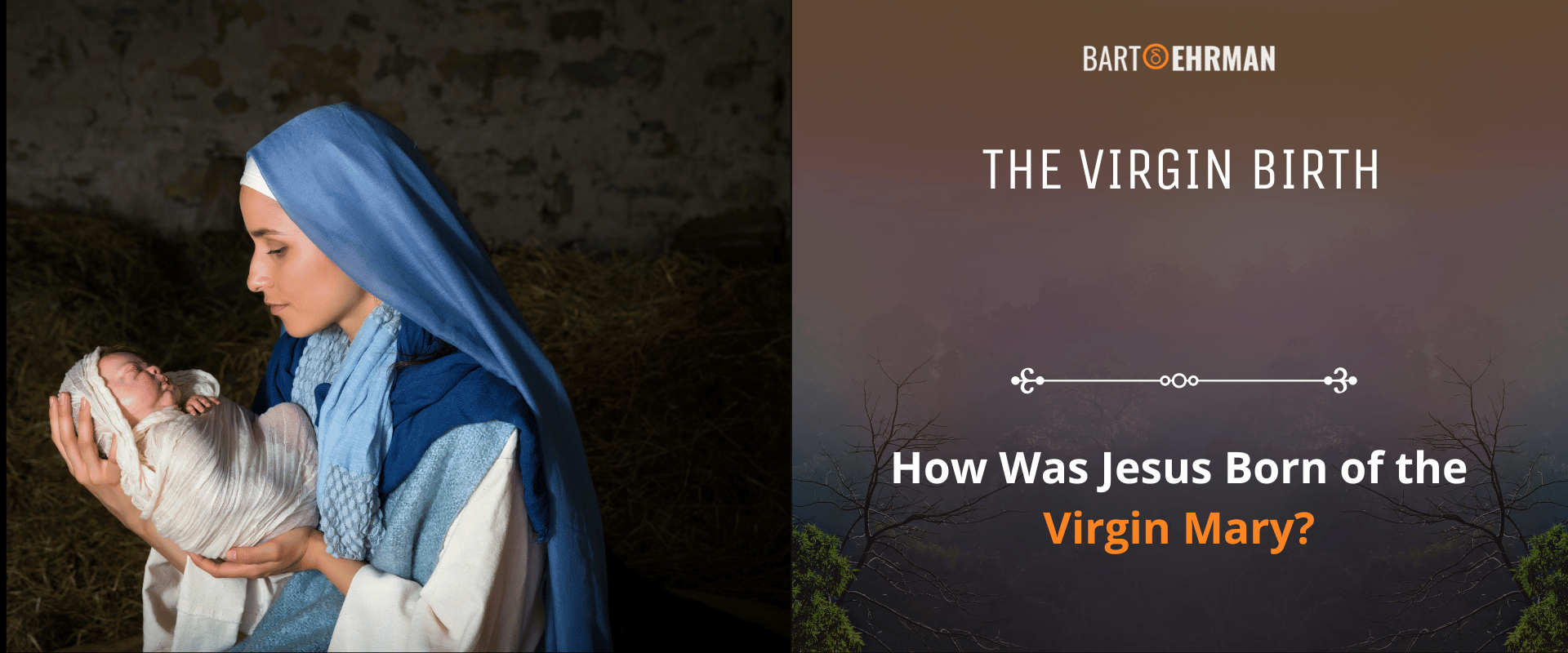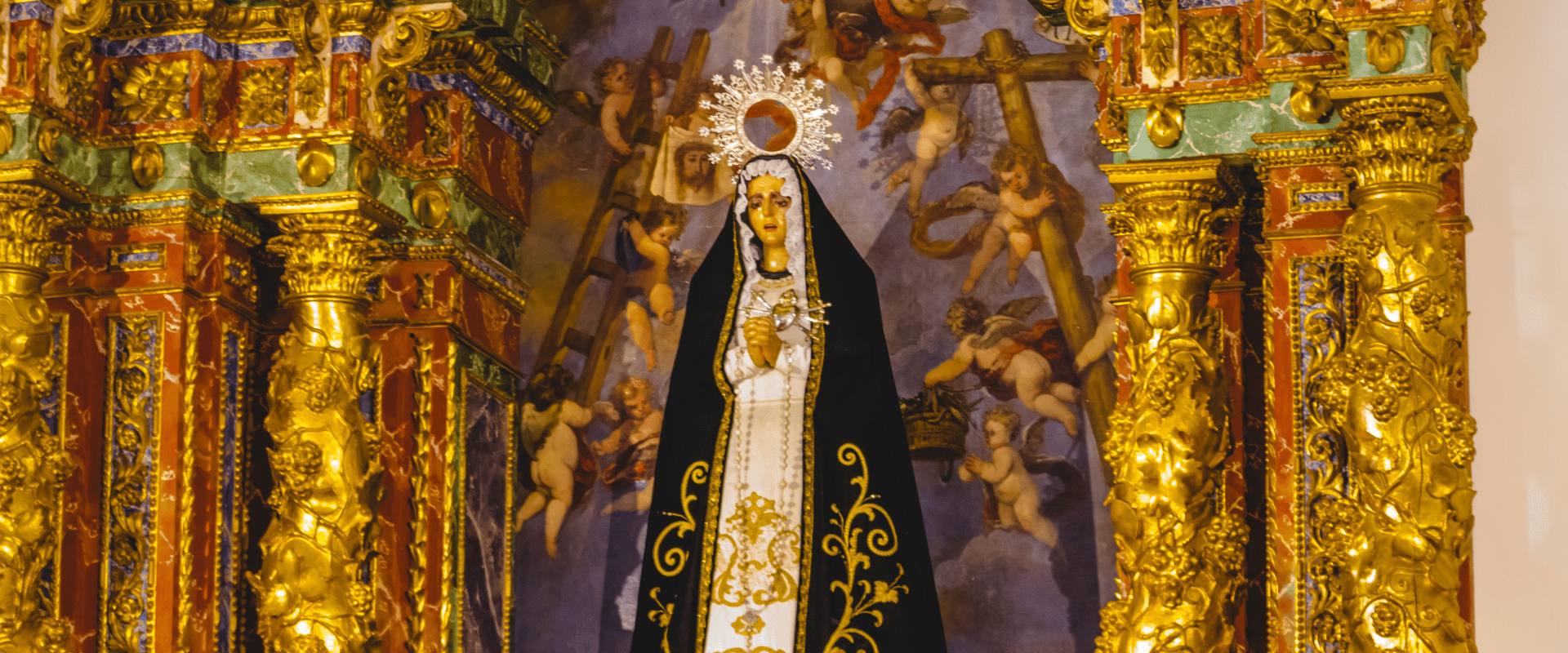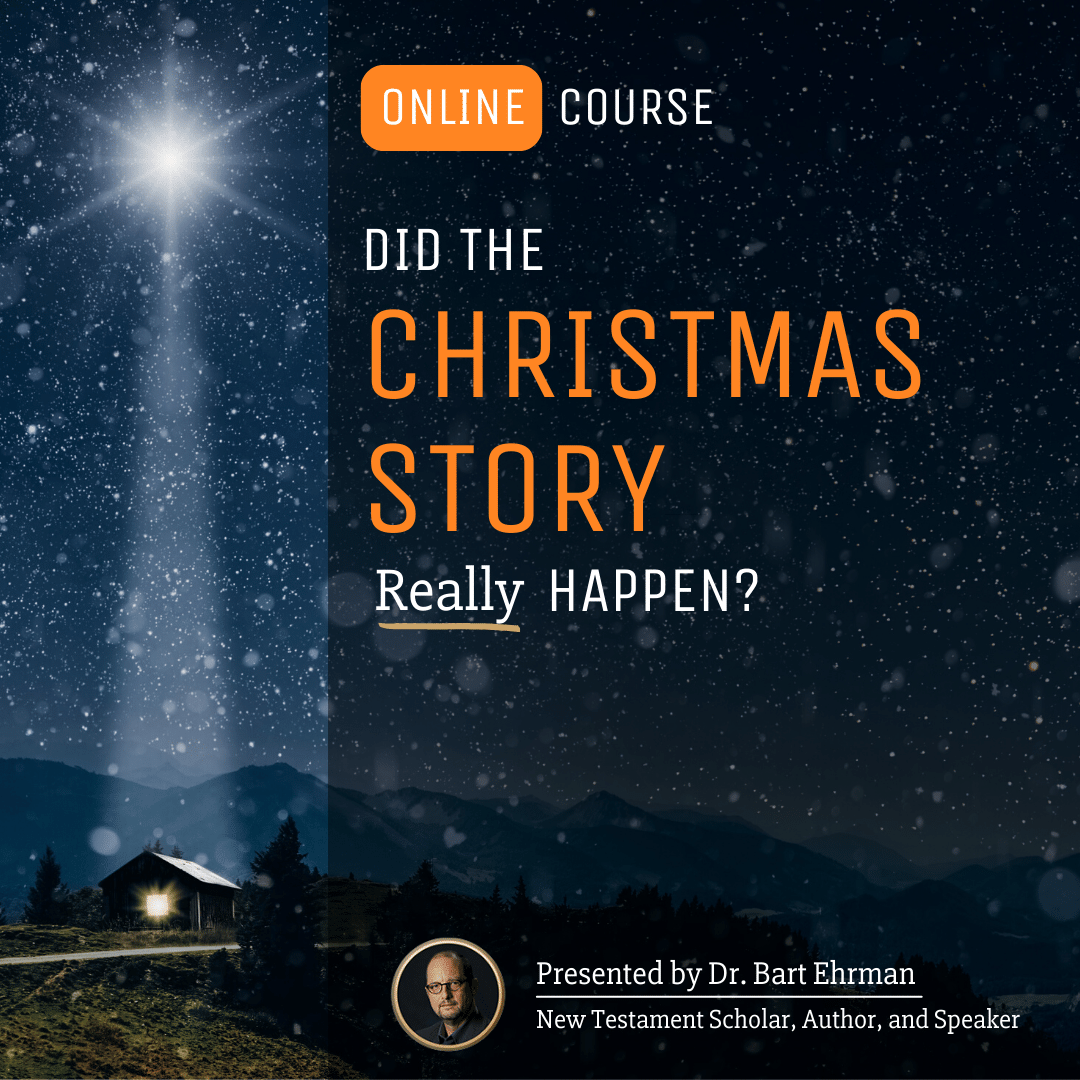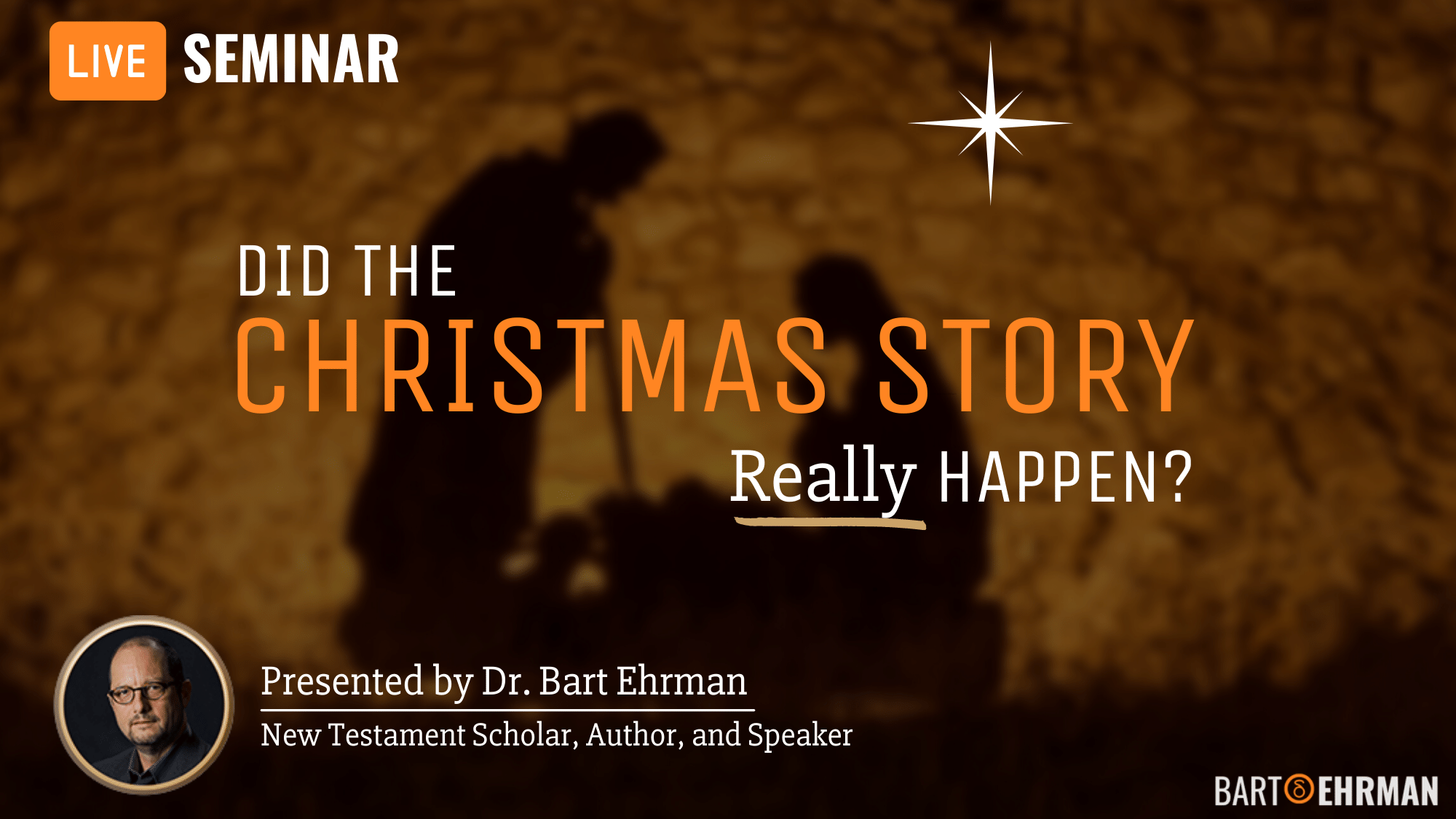The Virgin Birth: How Was Jesus Born of the Virgin Mary?

Written by Marko Marina, Ph.D.
Author | Historian
Author | Historian | BE Contributor
Verified! See our guidelines
Verified! See our editorial guidelines
Date written: December 18th, 2023
Disclaimer: The views and opinions expressed in this article belong to the author and do not necessarily match my own. - Dr. Bart D. Ehrman
During a recent visit to the Santa Maria Maggiore Church in Rome, I found myself standing in awe before one of the oldest depictions of the Virgin Mary, known as the Salus Populi Romani. This ancient icon, steeped in history and veneration, portrays Mary in a light that has captivated the Christian world for centuries.
Standing before this captivating piece of medieval art ignited a deeper curiosity about one of the most enigmatic and significant aspects of Christian doctrine: the virgin birth of Jesus. How was Jesus born of the Virgin Mary? What does the Bible tell us? And what is the importance of the virgin birth within the Christian tradition?
In this article, we’ll delve into the historical and theological exploration of the virgin birth, examining its depiction in the Gospels of Luke and Matthew and understanding its pivotal role in the early Christian tradition.
Before we examine where the story of the virgin birth came from, it’s essential to look at the nature of our sources!

Virgin Birth in the Bible: Introduction
When attempting to answer the question, "How was Jesus born?" historians and theologians alike turn to the primary sources available to us: the Gospels and Paul’s epistles in the New Testament.
The authors of the Gospels offer varying perspectives on Jesus' life and teachings. While each evangelist provides unique insights, they do not all address the circumstances of Jesus' birth in detail.
Paul’s epistles, our earliest Christian documents, focus more on theological issues of particular communities and less on the biographical details of Jesus’ life. So, where does the virgin birth appear in Scripture?
As it turns out, only two sources - the Gospels of Matthew and Luke - specifically delve into the narrative of Jesus' virgin birth. These accounts, though similar in their claim of Jesus being born to a virgin named Mary, present distinct details and contexts.
Matthew's account places the birth in the broader context of Jewish history and prophecies, while Luke provides a more detailed narrative, including the Annunciation to Mary. These variations offer a theologically rich tapestry of information. But they also raise intriguing questions about the historical understanding of “How was Jesus conceived?”.
Virgin Birth According to Luke
In the Gospel of Luke, the story of Jesus' birth begins with the Annunciation, an event that sets the stage for the miraculous nature of Jesus' conception. The angel Gabriel visits Mary, a young virgin betrothed to Joseph, in the town of Nazareth.
He greets Mary, saying, "Greetings, you who are highly favored! The Lord is with you." Mary, understandably troubled by this greeting, is reassured by Gabriel not to be afraid, for she has found favor with God.
According to Luke, Gabriel reveals to Mary the divine plan: "You will conceive and give birth to a son, and you are to call him Jesus. He will be great and will be called the Son of the Most High (Lk 1, 31-32).” This announcement is remarkable not only for its content but also for the manner of Jesus' conception. But how was Jesus conceived?
In Luke’s account, Gabriel explains that the Holy Spirit will come upon Mary, and the power of the Most High will overshadow her, resulting in a pregnancy that defies natural law. This conception, ensuring that the child would be called holy, the Son of God, signifies a pivotal moment in the Christian narrative, emphasizing Jesus' divine origin and purpose.
In other words, Luke emphasizes that God birthed Jesus through the divine union with Mary.
Mary’s Fiat: Meaning and Inspiration
Mary's response to this announcement is a testament to her faith and humility. She accepts this extraordinary role with the words, "I am the Lord’s servant... May your word to me be fulfilled (Lk 1,38)." This acceptance is crucial, as it reflects a willing participation in a plan far greater than herself.
In the later tradition, her answer became known as Mary’s fiat. It’s a Latin term meaning “let it be done” and it refers to Mary’s response to the Angel Gabriel during the Annunciation. Mary’s fiat became the symbol of an exemplary act of faith and obedience to God’s will.
Luke's version of the Annunciation thus portrays Mary not just as a passive recipient of God’s plan but as an active participant, showcasing her faith and the significance of her role in the divine narrative.
The Annunciation, as described by Luke, is central to the Christian understanding of Jesus' virgin birth. It intertwines the miraculous with the mundane, as an ordinary young woman in a small town is chosen for an extraordinary role.
Following the Annunciation, Luke's narrative leads us to the humble circumstances of Jesus' virgin birth. Mary and Joseph, due to a decree from Caesar Augustus requiring everyone to register in their ancestral town, travel to Bethlehem.
This journey sets the stage for Jesus' arrival into the world. In Bethlehem, due to the overcrowding caused by the census, Mary and Joseph find themselves in a modest setting, far from the comforts of home. It’s here, in a humble stable, that Mary gives birth to Jesus.
Luke poignantly notes the simplicity of this moment: the newborn Jesus is wrapped in cloth and laid in a manger, a feeding trough for animals, signaling the unassuming nature of his entrance into the world.
Did You Know?
In Guatemala, there is a vibrant and colorful Christmas tradition known as "Los Posadas," which is deeply rooted in the story of the virgin birth. This celebration reenacts Mary and Joseph's journey to Bethlehem and their search for a place to stay, leading up to Jesus' birth. During this festive period, which begins on December 16th and lasts until Christmas Eve, communities participate in nightly processions that symbolize the holy couple's quest for lodging.
Participants in "Los Posadas" carry statues of Mary and Joseph through the streets, stopping at designated homes to ask for shelter, while singing traditional songs. These homes, known as "posadas," are pre-selected and open their doors to the procession, symbolizing the inn that finally offered a place to Mary and Joseph.
This part of Luke’s account underlines the contrast between the heavenly announcement of Jesus' birth and the earthy, humble circumstances of his arrival. It presents a powerful image of divinity entering the world in the most modest of forms, aligning with the Gospel’s emphasis on humility and service.
The Gospel of Matthew and the Virgin Birth of Jesus
In the Gospel of Matthew, the story of Jesus' birth is framed quite differently from Luke's account. However, the central theme of both accounts is the idea of the virgin birth.
The author of Matthew begins with Joseph, betrothed to Mary, discovering that she is pregnant before they have come together. This discovery is deeply troubling to Joseph, who is described as a righteous man unwilling to expose Mary to public disgrace. He plans to divorce her quietly, but his plans are interrupted by divine intervention.
An angel of the Lord appears to Joseph in a dream, reassuring him to take Mary as his wife, for the child conceived in her is from the Holy Spirit. The angel further instructs Joseph to name the child Jesus, for he’ll save his people from their sins.
Matthew explicitly links this event to the prophecy from the Old Testament, quoting Isaiah: "The virgin will conceive and give birth to a son, and they will call him Immanuel (Mt 1, 23).” This reference is crucial, as it ties Jesus' birth to the fulfillment of messianic prophecies, emphasizing his identity and mission.
Unlike Luke, Matthew doesn’t detail the birth or the setting in Bethlehem. Instead, his focus is on Joseph's experience and the fulfillment of prophecy, underscoring the theological significance of the virgin birth in the Jewish context.
After resolving his initial doubts through the angel's message, Joseph takes Mary as his wife, but he doesn’t consummate their marriage until after Jesus is born, reinforcing the concept of virgin birth. Matthew then simply states that Mary gave birth to a son and that Joseph named him Jesus, adhering to the angel's instructions.
This brevity in describing the birth event places the focus not on the physical circumstances of Jesus’ arrival, but rather on the fulfillment of the prophecy and the legitimacy of Jesus as the Messiah.
Matthew's sparse details about the birth setting and events contrast sharply with Luke's elaborate description. There is no mention of a manger, shepherds, or a choir of angels, elements that are central to Luke’s account.
Instead, Matthew’s narrative swiftly moves to the visit of the Magi, an event unique to his Gospel, which further emphasizes the messianic recognition of Jesus. The virgin birth of Jesus in Matthew's Gospel thus serves as a theological anchor, grounding Jesus' life and mission in the fulfillment of Jewish prophecy and divine orchestration.

The Importance of the Virgin Birth in Christian Tradition
The concept of the virgin birth of Jesus Christ swiftly evolved into a foundational element of Christian theology, marking a significant point of both faith and doctrine. Why is the virgin birth important?
As it turns out, this belief, deeply rooted in the narratives of Matthew and Luke, served as a “scriptural testament” to Jesus’ divine origin and messianic identity. Furthermore, the early Christian communities often turned to the virgin birth as a key point of doctrinal clarity and affirmation.
One of the prominent figures in the early Christian Church who defended the historical authenticity and theological necessity of the virgin birth was Bishop Ignatius of Antioch. Writing in the early 2nd century, Ignatius staunchly opposed the docetic tendencies prevalent in some Christian circles.
Docetism, a belief that Jesus’ physical body was an illusion and that he didn’t truly suffer on the cross, challenged the very nature of Christ’s humanity - a notion that was unacceptable for the majority of Christians in the 2nd century.
In his letters, Ignatius emphasized the real, physical birth of Jesus to Mary, countering the docetic view by underscoring the genuine humanity of Christ. By affirming the virgin birth, Ignatius not only defended the historical authenticity of Jesus' birth as narrated in the Gospels but also reinforced the theological belief that Jesus was both fully divine, conceived by the Holy Spirit, and fully human, born of a woman.
The centrality of the virgin birth in Christian doctrine was further cemented with its inclusion in the Nicene Creed, formulated at the First Council of Nicaea in 325 AD and refined in subsequent councils.
This creed, a pivotal document in Christian history, was designed to establish a unified Christian doctrine and to address various theological controversies that had arisen.
Within its declarations, the Creed explicitly affirms the virgin birth: “…And in one Lord Jesus Christ, the only-begotten Son of God… Who, for us men for our salvation, came down from heaven, and was incarnate by the Holy Spirit of the virgin Mary, and was made man; and was crucified also for us under Pontius Pilate.”
The inclusion of the virgin birth in the Nicene Creed not only resolved doctrinal ambiguities but also served to unify the Christian understanding of Jesus Christ's nature and mission. By declaring it an essential element of faith, the Creed established a clear orthodoxy that countered alternative interpretations like Arianism, which questioned the divine nature of Christ.
The Nicene Creed, recited in churches around the world, continues to affirm the importance of the virgin birth, marking it as an enduring and pivotal element of Christian faith and identity.
Historians and the Problem of Miracle
When historians approach events such as the virgin birth, they encounter a fundamental boundary between the realms of faith and scholarly analysis of the past. The story of Jesus' miraculous conception, which asserts a supernatural intervention in the natural order, resides firmly in the domain of theological belief and faith. Historians, by the very nature of their discipline, operate within the framework of methodological naturalism.
As John P. Meier explains in his highly acclaimed study on the historical Jesus: "It's inherently impossible for historians working with empirical evidence within the confines of their discipline ever to make a positive judgment: 'God has directly acted here to accomplish something beyond all human power'.”
Some authors, such as Zeba Crook, suggest that methodological naturalism isn’t enough. Dr. Crook seems to think that historians should explicitly deny the possibility of miracles and thus conclude that miracles related to Jesus should be compared with ancient myths that nobody believes in.
Others (myself included!), however, tend to agree with Meier’s proposition. Bart D. Ehrman concludes: “Since historians can only establish what probably happened in the past, and the chances of a miracle happening are infinitesimally remote, historians can never demonstrate that a miracle probably happened.”
I should only add that this doesn’t mean a miracle didn’t happen. Many historians are committed Christians, but when they profess the belief in a miracle (e.g. the virgin birth), they do that based on their theology, not history!
Summing up Conclusion
In conclusion, our journey through the historical and theological landscapes of the virgin birth reveals its profound impact on the Christian faith. From the scriptural testimonies in Matthew and Luke to the awe-inspiring image of the Salus Populi Romani, the narrative of Jesus' conception by the Holy Spirit and birth from the Virgin Mary has resonated deeply within the Christian tradition.
For those intrigued by the concept of virgin birth and its place in antiquity, I highly recommend attending the two-part, 50-minute lecture series "The Other Virgin Births in Antiquity," presented by critically acclaimed Biblical Scholar Bart D. Ehrman.
In these lectures, Dr. Ehrman provides a scholarly look at the idea of virgin birth in antiquity, examining other examples of extraordinary individuals thought to be born from the union of a god and a human. This exploration offers a broader understanding of how such narratives have shaped religious and cultural landscapes across history.


